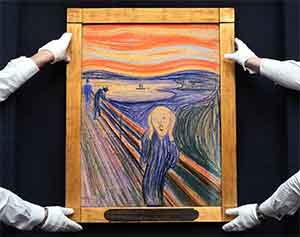The constructivist way of learning
By Prof. Francesco Carelli – Professor University of Milan and Campus Biomedico Rome
Constructivism represents a shift from education based on behaviorism to education based on cognitive theory.
To design constructivist learning the teacher focuses on creating learning experiences for the students by providing the resources necessary for them to construct their own model of knowledge.
In this way, the teachers design the learning experience based on their assessment of the students’ learning preferences, needs and interest. So, the teachers design an easy assessment of what the student already knows and design the bridge or the way to what they want the student really has to learn as final.
The teachers prepare some questions so to assess the students’ understanding of the concepts, skills, or attitudes they are learning.
The constructivist model of learning is based and really applied on actively engaging the students in situations where they explain their learning experience to others.
It is important to note that constructivism is not a particular pedagogy. In fact, constructivism is a theory describing how learning happens, regardless of whether learners are using their experiences to understand a lecture or following the instructions for building a model airplane. In both cases, the theory of constructivism suggests that learners construct knowledge out of their experiences. However, constructivism is often associated with pedagogic approaches that promote , or learning by doing.
Constructivist epistemology assume that learners construct their own knowledge on the basis of interaction with the environment.
At the heart of the constructivist learning process there are four epistemological assumptions:
- learners involved in active learning physically construct knowledge;
- learners managing their own representation of action symbolically construct knowledge;
- learners who convey their meaning to others socially construct knowledge;
- learners trying to explain topics they don’t completely understand theoretically construct knowledge.
Designing a constructivist learning experience
The primary view of constructivism is the learner’s active participation where students are making their own meaning and constructing their own knowledge in the process.
Some elements combine together to give the students a constructivist experience of learning: grouping, bridging, questions, reflection, reflection.
Grouping. The constructivist way of learning consists of two types of grouping.
- A) How the teacher groups the students in the class, so that each student can maximize his/her learning experience.
- B) How the teacher groups the materials, resources and information the student will use to explain the situation as it has been assigned by the teacher. The explanation may take the form of problem solving, physical modeling, graphically representing, numerically describing, or the student individually writing about his/her collective experience.
Bridging. Initially has to be determined what the student already knows so to bridge that information with what they might learn by exploring the situation. This activity can involve such activities as giving the student a simple problem to solve, having a whole group of students discussion, playing a game, or making a list.
Questions: These should be in every part f the learning process. Well- constructed questions by the teacher or the student can help the student become aware of what he/she is learning and how this learning experience is connected to his/her prior knowledge.
Reflection. Finally the students reflect on what they have just learned. This is one of the most important elements of a learning experience where exists the integration between what the student has just learned being incorporated into what the student already knows. So, reflection is the heart and the soul of the constructivist way of learning.
Assessment. This becomes an INTEGRAL part of every step in this learning design, where the teachers DESIGN the situation based on their assessment of the student’s learning preference, interest, needs. Grouping the assessment of the material available as a mix from students, the teachers design a simple assessment of what the student already knows and create the bridge to what they want the students have to learn, design questions to assess students’ understanding of the concepts, skills, or attitudes they are trying to learn. Finally, the teacher arranges an exhibit for the students to record what they are thinking about during all the learning experience.
Dynamic assessment This is a way of assessing the true potential of learners that differs significantly from conventional tests. Here the essentially interactive nature of learning is extended to the process of assessment. Rather than viewing assessment as a process carried out by one person, such as an instructor, it is seen as a two-way process involving interaction between both instructor and learner. The role of the assessor becomes one of entering into dialogue with the persons being assessed to find out their current level of performance on any task and sharing with them possible ways in which that performance might be improved on a subsequent occasion. Thus, assessment and learning are seen as inextricably linked and not separate processes (Holt and Willard-Holt 2000).
According to this viewpoint instructors should see assessment as a continuous and interactive process that measures the achievement of the learner, the quality of the learning experience and courseware. The feedback created by the assessment process serves as a direct foundation for further development.




